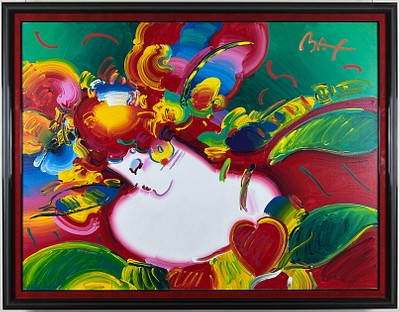Thomas Moran "Venice, 1897" Notebook
Lot 792
Categories
Estimate:
$200 - $400
Absentee vs Live bid
Two ways to bid:
- Leave a max absentee bid and the platform will bid on your behalf up to your maximum bid during the live auction.
- Bid live during the auction and your bids will be submitted real-time to the auctioneer.
Bid Increments
| Price | Bid Increment |
|---|---|
| $0 | $5 |
| $100 | $10 |
| $200 | $20 |
| $1,000 | $50 |
| $5,000 | $100 |
| $10,000 | $200 |
About Auction
By Scottsdale Art Exchange
Jul 29, 2023
Set Reminder
2023-07-29 12:00:00
2023-07-29 12:00:00
America/New_York
Bidsquare
Bidsquare : Our Annual Midsummers Day Auction
https://www.bidsquare.com/auctions/scottsdale-art-exchange/our-annual-midsummers-day-auction-13196
This auction will feature 900 amazing items. The Auction will include 300 items for our fine art gallery and over 600 items from our consignment partners. Scottsdale Art Exchange sue@firerockfineart.com
This auction will feature 900 amazing items. The Auction will include 300 items for our fine art gallery and over 600 items from our consignment partners. Scottsdale Art Exchange sue@firerockfineart.com
- Lot Description
Thomas Moran was an American painter and printmaker who was born on February 12, 1837, in Bolton, England, and passed away on August 25, 1926, in Santa Barbara, California. He is renowned for his landscape paintings that captured the grandeur and beauty of the American West. Moran's artistic career took off when he joined a surveying expedition to the Yellowstone region in 1871. His encounters with the awe-inspiring landscapes of Yellowstone inspired him to create a series of paintings that played a significant role in the establishment of the national park. One of his most famous works, "The Grand Canyon of the Yellowstone," brought attention to the region's natural wonders and contributed to its preservation. Moran was known for his ability to capture the dramatic and sublime qualities of the American wilderness. His paintings often showcased expansive vistas, towering mountains, and colorful sunsets, imbuing them with a sense of awe and reverence. Moran's use of vibrant colors, meticulous details, and atmospheric effects conveyed a deep appreciation for the power and majesty of nature. Beyond his depictions of Yellowstone, Moran also painted other iconic American landscapes, including the Grand Canyon, the Rocky Mountains, and coastal scenes of Maine and California. His works combined realism with a touch of romanticism, evoking a sense of adventure, exploration, and national pride. In addition to his paintings, Moran was skilled in printmaking, particularly in etching and aquatint. His prints further popularized his depictions of the American West and made his art more accessible to a broader audience. Thomas Moran's contributions to American landscape painting were highly regarded during his lifetime and continue to be influential today. His works can be found in major museums across the United States, and his legacy as a leading figure of the Hudson River School and the American art scene of the late 19th century remains significant.
Measures 6 x 8.Good condition. No rips, tears, creases.Condition
- Payment & Auction Policies
-
Available payment options
-
-
- Buyer's Premium



 EUR
EUR CAD
CAD AUD
AUD GBP
GBP MXN
MXN HKD
HKD CNY
CNY MYR
MYR SEK
SEK SGD
SGD CHF
CHF THB
THB



















